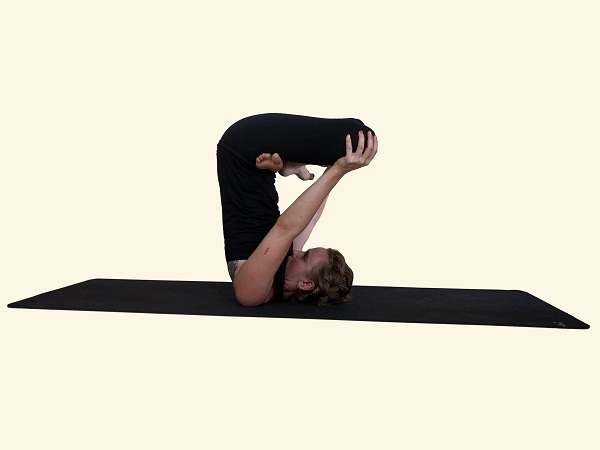This is a challenging posture and an extension of Sarvangasana (Shoulderstand) seen in the first series of Ashtanga Yoga. You need to make sure you master the full lotus before attempting this pose.
There is also a variation of this posture in headstand I will be posting about that soon, but the techniques are similar.

Steps:
- Begin in Salamba Sarvangasana (Supported Shoulderstand) with both legs straight and the hands supporting the back.
- Exhaling bring the right ankle on the right thigh, and the left ankle to the right thigh ( Take one hand away from the back to assist, if necessary)
- Inhale fully, then exhale flex the hips to bring the thigh bones parallel to the floor.
- Take your hands to your knees one at a time and push the arms straight. Create a stable posture by pressing your knees into your hands and your hands into your knees. while opening your shoulders to create the triangle base between your shoulders and head (if you feel pressure on the top of your neck tilt your head back a little) gaze is to the nose.
- Stay for five deep breaths
- To release bring the hands down to the floor palms facing down (using your arms as breaks) SLOWLY exhale and lower the spine down onto the floor. (if you don’t feel that you can lower down in a controlled manner like this you may keep your hands on your hips)
- Either continue to Matsyasana (Fish Posture) or release the legs.
You can modify this posture leaving your hands to support the spine until you manage to get the balance right.
Benefits:
- Stimulates the thyroid gland, and kidneys
- Can aid in digestion by bringing more blood and therefore oxygen to the abdominal organs
- Stimulates circulation and the breath.
- Strengthens the arms, neck and shoulders and back muscles
- Can be used to help with chronic migraine or headaches (do not practice if acute)
Contraindications:
- Knee, ankle, shoulder, neck or hip injuries
- Acute headache
- High blood pressure
Look for other postures in our asana directory